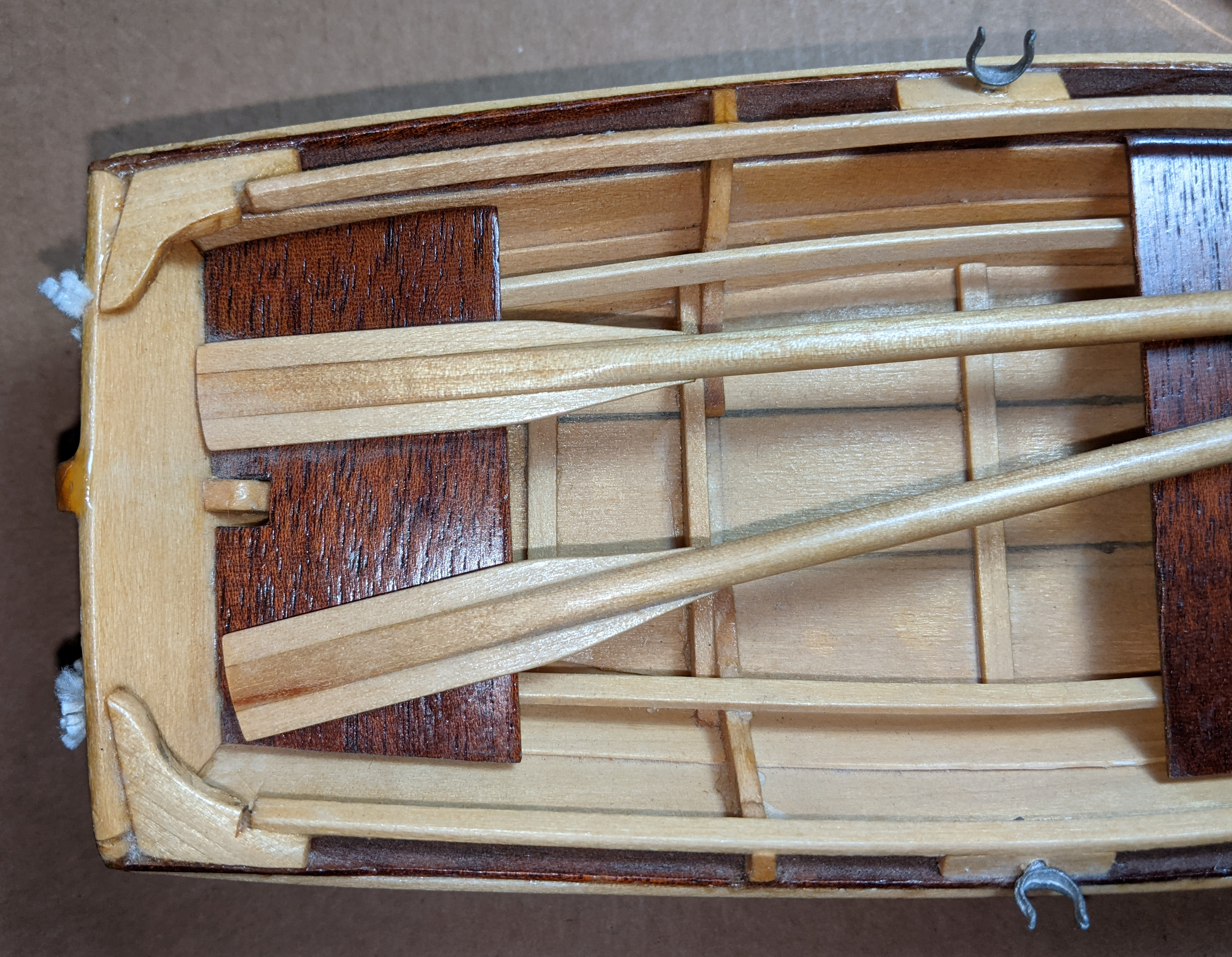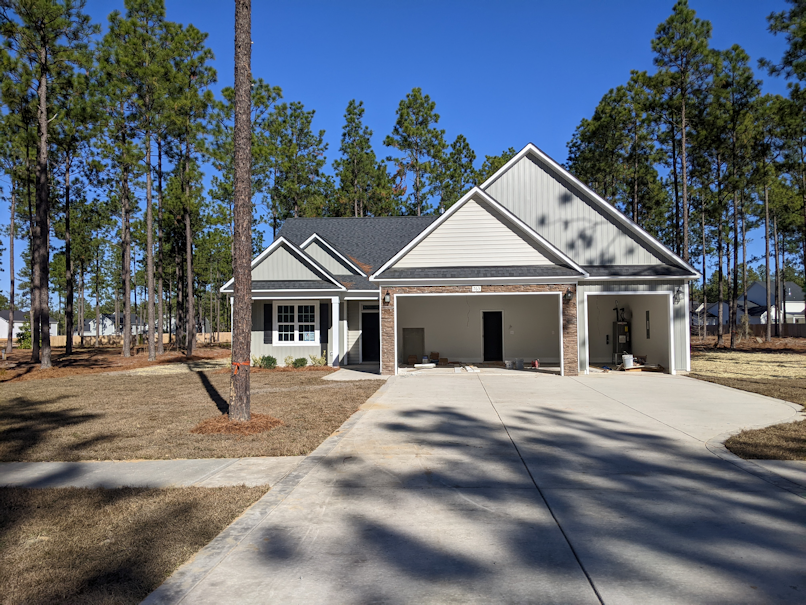-
Posts
907 -
Joined
-
Last visited
Content Type
Profiles
Forums
Gallery
Events
Everything posted by robert952
-
Us lurkers like this kind of thread, too. Thanks for posting.
-
I promised the Admiral I would reduce the number of models I have after we moved. (Don’t worry. I still have PLENTY to build.) To her joy, I put 26 on the chopping...,I mean, shopping block. Most of these I have either lost interest in the subject matter (military vehicles), inherited them from my sons who did not get into model building (spaceships, fantasy stuff), or I thought at the time of purchase they were ‘a great deal.’ (But I am not trying to make a profit as such.) There is the proverbial, 'when will I build them' reason to cull the herd. Of potential immediate interest may be the eight ship models listed below. I give the kit number so you can look at the kits online and check prices. Mine are lower than the lowest price I found online. I hope the price entices you. Photos of the kit follow the listing pages in the PDF. The attached PDF file provides details on all 26 models. The buyer pays shipping costs. I will do my best to get an accurate cost once I have your shipping address. I am limiting the shipments to the mainland US to keep costs down and hope to use USPS. I realize the cost of shipping may exceed my selling price. So, I want you to make informed decisions. The sequence of each line follows this pattern: Reference number / Manufacturer / Scale / Kit (catalog number) / price. (Reference number is used to identify photos in the PDF.) Ships (Wooden) 1. Cutty Sark / Scientific / 1:140 / 174 / $25.00 2. New York Pilot Boat/ Model Shipways / 1:96 / 2027 /$30.00 Ships and Boats (Plastic) 3. USS Missouri / Revel / 1:535 / 85-0301 / $12.00 4. USS Arizona / Revel / 1:426 / 85-0302 / $12.00 / (Buy them both: $20.00; an appropriate pair to have together) 5. USS Constitution / Revel / 1:196 / 85-5404 / $25.00 6. Diesel Tug / Lindberg / 1:87 / 772221 / $15.00 7. North Atlantic Fishing Trawler / Lindberg / 1:90 / 77222 / $10.00 8. Monitor and Merrimac / Linberg Classic Replica / 1:210 and 1:300 respectively / 718 / $10.00 PM me if interested in any of them. Also, I will consider discounting (like items 3 and 4 above) for multiple items purchased. Cull my stash.pdf
-
That new model smell. 😁
- 40 replies
-
- Model Shipways
- Muscongus Bay Lobster Smack
-
(and 1 more)
Tagged with:
-
Thanks for the detailed answer. I appreciate your candor and think others will, too. I look forward to your next build.
- 62 replies
-
- Muscongus Bay Lobster Smack
- Model Shipways
-
(and 1 more)
Tagged with:
-
I'll add my congrats and good job! (I enjoyed your comment that they won't be confused for airplanes. That's one of my criteria for success - that it at least looks like what I intended to build.) Now that you have completed these three (which make up the Model Shipways series for beginners), and if you don't mind answering. (If you prefer not to answer, no problem. I find it interesting to hear/read what people think.). What advise would you pass along from the experience? What's your 'final thoughts' on the series? (I am trying to talk my Dad into starting the series. I gave him the dory only so I don't overwhelm him but have all three if he decides to get into this hobby.) What were the biggest 'take-aways' from the experience of building these three? And, what's the next for in your shipyard? (Purely just nosey curiosity.)
- 62 replies
-
- Muscongus Bay Lobster Smack
- Model Shipways
-
(and 1 more)
Tagged with:
-
I just finished a complete read through of this log. Nice job on the model. Glad to see you have continued to work on this model. I find the battle between the Virginia and Monitor too be a great study in the evolution of warships. An interesting book (IMHO) is The Monitor Chronicles published by the Mariner's Museum which houses artifacts of the Monitor. The book uses source material of letters from crew members, newspapers articles, and letters from some of the principle players. Another on the ships and battle is by John V Quarstein: The Battle of the Ironclads. Keep up the nice work on the model.
- 37 replies
-
- first build
- BlueJacket Shipcrafters
-
(and 1 more)
Tagged with:
-
OK...getting closer to returning to this project. As stated, it seems forever ago, we started the process of moving to a new home that was under construction (concrete pad had just been poured). Long story short: While the house was under construction, we moved stuff to a 'u-stor-it' place (about 8 loads in my small SUV). That included ALL my modeling accoutrements. With the Admiral's permission, I have a room that I can call "My Room" which will have my relocated workbench. (I may lay claim to the third garage in the image below. Don't tell the Admiral.) We closed the sale yesterday (1/9). Today, we got major appliances in place and got a propane tank (for cooktop and fireplace only) installed. Mover comes tomorrow to pick up my worldly possessions at old home and move them to new. (I will be off-line for some time until I get my inhouse network squared a way and ship shape.) One loose end with a 'move out' cleaning of my old home will be tied off on 1/13. Then, the work of finding all my previously mentioned worldly possessions and putting them where they belong in the new digs starts in earnest. Especially the stuff for "My Room."
- 44 replies
-
- maine peapod
- peapod
-
(and 4 more)
Tagged with:
-
Where can I get a set of those tools? A couple I think I know how they would work. Congrats on finishing the model. @Dave_E Like just about any endeavor, there's an learning curve. Start with a simpler project and move on to more advanced. Look at my Monitor and Merrimac build for another project. (Link in signature.) My Metal Earth track record: I've done 3 successfully, ruined 1 because I didn't pay attention to the instructions and couldn't back up to fix the problem.
-
Great detail for the scales they use. This one is 1:130 scale. Looking forward to watch the rest of this build. Looking great. I find the Metal Earth models to be a great change of pace. They usually take only a few hours (over several days) to complete them. I have 4 or 5 in my stash (including the USS Constitution.)
-
Thanks for sharing your experience, James. I haven't been discouraged by the kit. Frustrated, yes. But for me that's part of the learning process. One goal I set was to learn how to apply planks to a model. I agree, making complex bends proved challenging. (A few planks had to be redone during the process.) I think I accomplished the task adequately and reached my learning goal. Once I made the turn towards the keel, the process became easier and relied more on trimming the planks over bending them. And your points of filling and sanding are spot on. The lines of the boat make sanding the interior (particularly) difficult. I think the kit does a good job providing learning opportunities for the beginner. The kit also gives room to modify and differentiate the model. My adding a keel and sail will be my contribution to the changing the kit. I guess that shows the different experiences we have had with the model. I am not trying to discount the technique the image shows for that prototype. The image obviously shows an approach for constructing these boats. I found the images below of a peapod under construction at this site: Soundings. (Original article published in June 2021) It appears there's multiple ways for building a peapod using different planking techniques. My opinion is that the small planks are an accurate method for some peapods. Side Bar: It's hard to believe my last post in this thread was October! However, I do see a light (dim as it is) at the end of the tunnel. Our physical move should be completed by mid-January. I hope get back to this model in February/March. (Part of that time frame depends on my ability to find all my tools and modeling stuff we packed for the move. 🥴 ) I am glad I decided to focus on the move over attempting to continue work on the model. Between getting my house ready to sell and keeping track of the construction of the new home, I have had little spare time. That situation would have been discouraging. However, the time to focus on my modeling is approaching.
- 44 replies
-
- maine peapod
- peapod
-
(and 4 more)
Tagged with:
-
The evolution and design details of small boats shows a lot of opportunity to model even small boats more accurately. I have been leaning towards the smaller craft as I build my skill sets and research reading. If I recall, Howard Chapelle's American Small Sailing Craft addressed a section on dories. (My library is packed and in temporary storage, so I can't verify that fact.) He discusses both versions of boats with and without sails. A lot of small craft was 'customized' for specific roles and locales. I find what you describe on the dory very interesting info on this construction. I'll have to take another read through my copy.
-
Following along. As you point out, there's several other logs for this half-hull. Yours is shaping up to be a good one to bookmark. Sound processes you are using to solve the problems.
- 17 replies
About us
Modelshipworld - Advancing Ship Modeling through Research
SSL Secured
Your security is important for us so this Website is SSL-Secured
NRG Mailing Address
Nautical Research Guild
237 South Lincoln Street
Westmont IL, 60559-1917
Model Ship World ® and the MSW logo are Registered Trademarks, and belong to the Nautical Research Guild (United States Patent and Trademark Office: No. 6,929,264 & No. 6,929,274, registered Dec. 20, 2022)
Helpful Links
About the NRG
If you enjoy building ship models that are historically accurate as well as beautiful, then The Nautical Research Guild (NRG) is just right for you.
The Guild is a non-profit educational organization whose mission is to “Advance Ship Modeling Through Research”. We provide support to our members in their efforts to raise the quality of their model ships.
The Nautical Research Guild has published our world-renowned quarterly magazine, The Nautical Research Journal, since 1955. The pages of the Journal are full of articles by accomplished ship modelers who show you how they create those exquisite details on their models, and by maritime historians who show you the correct details to build. The Journal is available in both print and digital editions. Go to the NRG web site (www.thenrg.org) to download a complimentary digital copy of the Journal. The NRG also publishes plan sets, books and compilations of back issues of the Journal and the former Ships in Scale and Model Ship Builder magazines.





